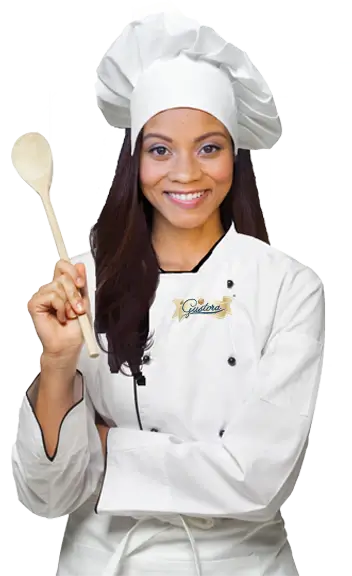Perfect Pasta Pairings: How to Match Sauce, Cheese, and Wine Like a Pro
Matching pasta with the right sauce, cheese, and wine can elevate your meal to a truly gourmet experience. The key lies in understanding the flavors and textures of your pasta dish, and pairing them in a way that complements and balances each other perfectly. This guide explores the essentials of pairing these components like a professional, ensuring every bite and sip harmonizes beautifully.
Let the Sauce Guide You
The sauce is the heart of any pasta dish, and it plays the most crucial role in pairing decisions.
-
Tomato-Based Sauces: These have a bright acidity and robust flavor. Medium-bodied red wines such as Pinot Noir or Sangiovese beautifully complement the tanginess and richness found in sauces like marinara, puttanesca, or arrabbiata. The acidity in the wine balances the acidity of the tomatoes, while fruity or spicy notes enhance the sauce’s character.
-
Creamy Sauces: Alfredo, carbonara, and other cream-based sauces benefit from full-bodied whites such as Chardonnay. The creamy, buttery texture of the wine mirrors the luscious sauce, enhancing its richness. Crisp white wines like Pinot Gris or sparkling wines can also cut through the richness, providing refreshing contrast.
-
Pesto and Herb-Based Sauces: Herbaceous and zesty white wines like Sauvignon Blanc are ideal partners for pesto pasta. Their citrus and green notes uplift the fresh basil, pine nuts, and garlic without overpowering them. Light, dry rosés can also complement the natural vibrancy of pesto.
-
Meat and Ragu Sauces: Hearty meat sauces call for bold reds such as Cabernet Sauvignon or Merlot, which have the body and tannins to stand up to rich flavors. Italian reds like Chianti or Brunello di Montalcino work especially well with lasagna and ragus.
The Role of Cheese in Pairings
Cheese adds richness and complexity to pasta, so it’s essential to balance it with your wine choice.
-
Soft and Creamy Cheeses: Cheeses like mozzarella and ricotta pair wonderfully with light-bodied white wines that have a touch of acidity to refresh the palate.
-
Hard and Aged Cheeses: Parmesan, Pecorino, and aged Asiago have intense flavors and saltiness that pair well with wines possessing enough acidity and structure, for example, Pinot Noir or dry sparkling wines.
-
Cheese-Dominant Dishes: Creamy cheese sauces (like in mac and cheese) pair best with oaked Chardonnay or sparkling rosé, where the wine’s rich texture complements cheese richness while the bubbles or acidity cleanse the palate.
Wine Selection by Pasta Type
Here are some specific pairings to follow:
| Pasta Dish | Sauce Type | Wine Pairing | Why It Works |
|---|---|---|---|
| Spaghetti Marinara | Tomato-Based | Pinot Noir, Sangiovese | Balances acidity and complements fruitiness |
| Fettuccine Alfredo | Creamy | Chardonnay, Pinot Gris, Sparkling Wine | Matches creaminess and refreshes richness |
| Pesto Pasta | Herb-Based | Sauvignon Blanc, Dry Rosé | Enhances herbal and citrus flavors |
| Spaghetti Carbonara | Creamy & Egg | Pinot Gris, Chardonnay, Sparkling Wine | Cuts through richness with crispness |
| Lasagna | Meat & Tomato | Chianti, Brunello di Montalcino | Bold tannins handle hearty flavors |
| Mac and Cheese | Cheese-rich | Oaked Chardonnay, Sparkling Rosé | Complements richness, bubbles cleanse palate |
Temperature and Texture Matter
Serve your wines at the appropriate temperature to maximize flavor: whites and rosés chilled, reds slightly below room temperature. Consider texture harmony; a velvety wine pairs well with creamy sauces, while a more tannic wine contrasts well with fatty meat ragu.
Final Tips for Pairing Like a Pro
-
Always prioritize the sauce characteristics over the pasta type for wine choosing.
-
Use cheese to balance flavors, not overpower them — let wine and cheese work in tandem.
-
Think about acidity: wines with sufficient acidity balance rich, creamy, or fatty dishes.
-
Don’t be afraid to experiment with sparkling wines; their effervescence pairs well with many pasta dishes, especially those with cheese.
-
Enjoy the sensory experience — pairing is about enhancing your enjoyment.
By understanding the foundational principles behind sauce, cheese, and wine pairings, anyone can become adept at creating delicious and balanced pasta meals. Whether you’re hosting a dinner party or enjoying a casual meal, these guidelines will help you impress yourself and your guests with expertly matched flavors that truly elevate every bite and sip.
This comprehensive guide offers a solid framework to match sauces, cheeses, and wines thoughtfully, ensuring your pasta meals are consistently delightful and memorable. Bon appétit!
This answer is based on multiple expert sources on pasta and wine pairing, including key pairing principles for sauce types and wine varieties.


